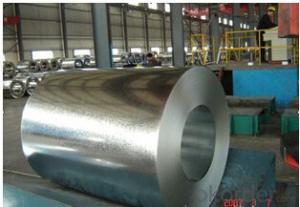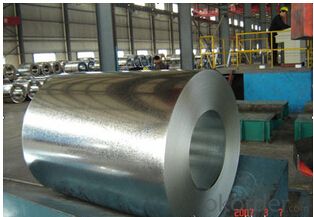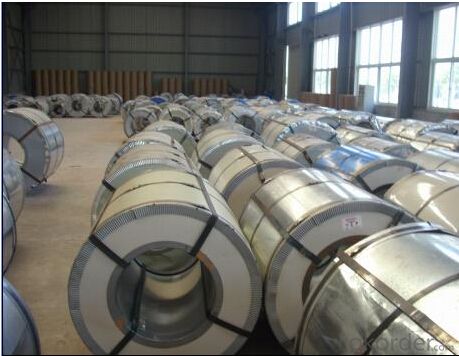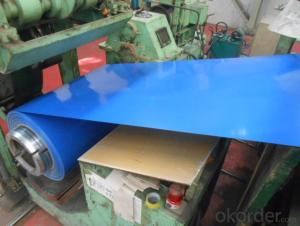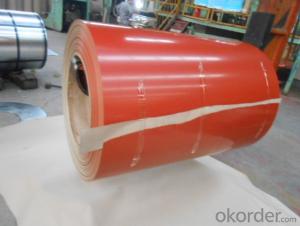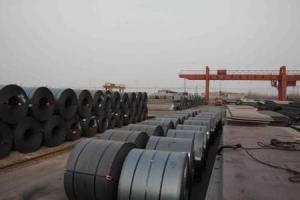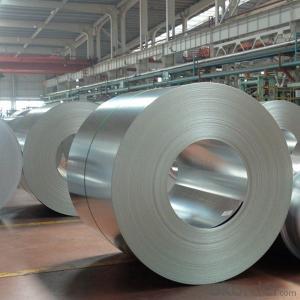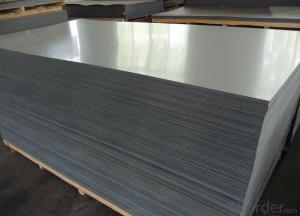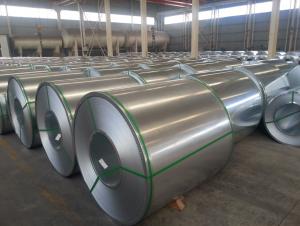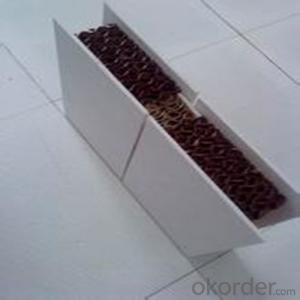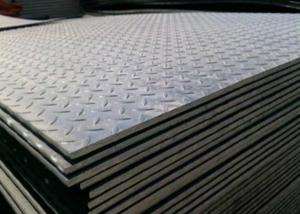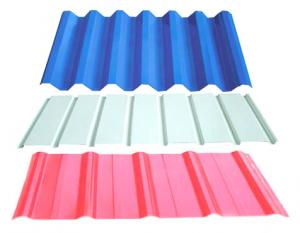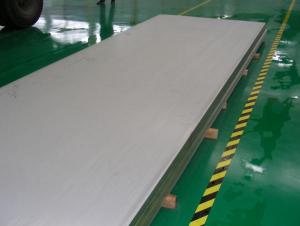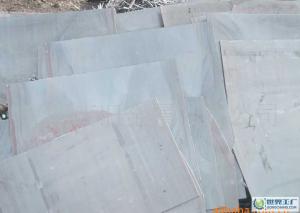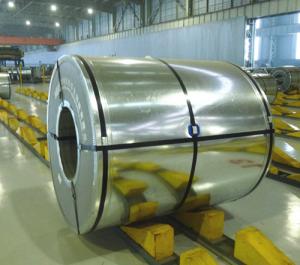High Quality of Galvanized Steel Coil from China
- Loading Port:
- Shanghai
- Payment Terms:
- TT OR LC
- Min Order Qty:
- 50 m.t.
- Supply Capability:
- 5000 m.t./month
OKorder Service Pledge
OKorder Financial Service
You Might Also Like
1. Hot-Dip Galvanized Steel Coil Description:
Hot-dip galvanized steel coil are available with a pure zinc coating through the hot-dip galvanizing process. It offers the economy, strength and formability of steel combined with the corrosion resistance of zinc. The hot-dip process is the process by which steel gets coated in layers of zinc to protect against rust. It is especially useful for countless outdoor and industrial application.
2.Main Features of the Hot-Dip Galvanized Steel Coil:
• Excellent process capability
• Smooth and flat surface
• Workability, durability
• Excellent heat resistance performance
• High strength
• Good formability
• Good visual effect
3.Hot-Dip Galvanized Steel Coil Images

4.Hot-Dip Galvanized Steel Coil Specification
Standard: AISI, ASTM, BS, DIN, GB, JIS
Grade: SPCC, SPCD, Q195, DX51D
Thickness: 0.15-5.0mm
Model Number: coil
Type: Steel Coil
Technique: Cold Rolled
Surface Treatment: Galvanized
Application: Container Plate
Special Use: High-strength Steel Plate
Width: 600-1250mm
Length: depends
commodity: hot dipped galvanized steel coil
technique: cold rolled
thickness: 0.15-5.0mm
width: 600-1500mm
surface treatment: galvanized
zinc coating: 50-275g/m2
coil weight: 3-7 tons
coil ID: 508/610mm
spangle: zero spangle, regular spangle, small spangle, big spangle
payment term: by L/C or T/T
5.FAQ of Hot-Dip Galvanized Steel Coil
What’s the application of this product?
There are many applications for this product. For example, roofing, cladding, decking, tiles, sandwich walls, etc.
What’s the coating composition of Hot-Dip Galvanized Steel Coil?
The coating composition is 55% aluminium in weight ratio, 43.4% zinc, and 1.5% silicon, with excellent corrosion and heat resistance performance.
>We use the best brand of all of the word—AKZO.
- Q: Can steel sheets be used for conveyor belts?
- Yes, steel sheets can be used for conveyor belts. Steel is a versatile and durable material that can withstand heavy loads and high temperatures, making it suitable for conveyor belt applications. Steel sheets can be fabricated into various shapes and sizes, allowing for customization based on the specific conveyor system requirements. Additionally, steel sheets offer excellent resistance to wear, impact, and corrosion, ensuring a longer lifespan for the conveyor belt. Overall, steel sheets provide a reliable and robust solution for conveyor belt applications in industries such as manufacturing, mining, and logistics.
- Q: Are lead contained in galvanized steel plates and plain steel plates?
- According to the content of alloy elements, divided intoLow alloy steels (alloy elements less than 5%),Medium alloy steel (total alloy element is 5%-10%)High alloy steel (amount of alloying elements is higher than 10%).
- Q: What is the process of polishing steel sheets?
- The process of polishing steel sheets involves several steps to achieve a smooth and shiny finish. First, the steel sheets are cleaned to remove any dirt, oil, or debris that may be present on the surface. This is typically done using a degreaser or a solvent. Next, the sheets are sanded using abrasive materials, such as sandpaper or a sanding belt. This step helps to remove any visible scratches or imperfections on the surface of the steel. After sanding, the sheets are typically polished using a polishing compound or paste. This compound is applied to the surface and rubbed in with a cloth or a buffing wheel. The polishing compound helps to remove any remaining scratches and brings out the natural shine of the steel. Once the initial polishing is complete, a finer polishing compound may be used to further enhance the shine and smoothness of the steel sheets. This step is repeated until the desired level of polish is achieved. Finally, the sheets are thoroughly cleaned and inspected to ensure that they meet the desired quality standards. This may involve removing any remaining polishing compound residue and checking for any remaining imperfections. Overall, the process of polishing steel sheets requires careful cleaning, sanding, and polishing to achieve a smooth and shiny finish. The specific techniques and materials used may vary depending on the desired level of polish and the type of steel being polished.
- Q: Can steel sheets be used for automotive body reinforcements?
- Yes, steel sheets can be used for automotive body reinforcements. Steel sheets are commonly used in automotive manufacturing due to their high strength and durability. They provide structural support and help enhance the safety and rigidity of the vehicle's body.
- Q: What are the advantages of using steel sheets in construction?
- There are several advantages of using steel sheets in construction. Firstly, steel sheets are incredibly strong and durable, making them ideal for supporting heavy loads and withstanding harsh weather conditions. Secondly, steel sheets are fire-resistant, providing an added layer of safety to the structure. Additionally, steel sheets are easy to work with, allowing for quick and efficient construction processes. Moreover, steel is a sustainable material, as it can be recycled and reused. Finally, steel sheets offer design flexibility, allowing architects and engineers to create innovative and aesthetically pleasing structures.
- Q: What's the difference between low carbon steel and cold rolled steel?
- It is usually used for cold rolled, low carbon steel for cold rolling, high carbon steel, generally not suitable for cold rolled steel plate, of course, this does not mean it completely just cold rolled steel of low carbon steel, because of the addition of alloy elements in all kinds of low carbon steel alloy steel can be different, such as P-added high strength steel, high strength low alloy steel after cold rolling after the steel is cold rolled steel grades, is just not the same.
- Q: Can steel sheets be used for signage?
- Yes, steel sheets can be used for signage. Steel has excellent durability and sturdiness, making it suitable for outdoor signage applications. It can be easily cut into various shapes and sizes, allowing for customized signage designs. Additionally, steel sheets can be painted or coated to enhance their visual appeal and protect against corrosion.
- Q: Excuse me, what's the difference between cold rolled steel plate and hot plate in steel plate?
- The production process of cold rolled steel plate and hot rolled steel plate is different. Hot rolling is rolled at high temperature, and cold rolling is blown at room temperature
- Q: Are the steel sheets resistant to impact or denting?
- Yes, steel sheets are highly resistant to impact and denting. Steel is known for its exceptional strength and durability, making it one of the most reliable materials for various applications. The inherent properties of steel, such as its high tensile strength and toughness, provide excellent resistance against impact and denting. Additionally, steel sheets can be further enhanced with special coatings or treatments to increase their resistance to impacts or dents, making them even more reliable in demanding environments. Overall, steel sheets are a preferred choice for applications where impact resistance and denting are significant concerns.
- Q: What welding rod should be used for welding of cast iron and Q235B steel plate?
- Such as outdoor and field construction, should be relatively closed work environment, do a good job of wind work, reduce air flow. Two. Use acetylene torch to preheat the welding and its surrounding parts, and then weld them to a temperature. Three, welding side edge knocking release and eliminate stress. Four, slow cooling is correct, after welding torch with air flow slow heating, avoid welding temperature drop.
Send your message to us
High Quality of Galvanized Steel Coil from China
- Loading Port:
- Shanghai
- Payment Terms:
- TT OR LC
- Min Order Qty:
- 50 m.t.
- Supply Capability:
- 5000 m.t./month
OKorder Service Pledge
OKorder Financial Service
Similar products
Hot products
Hot Searches
Related keywords
